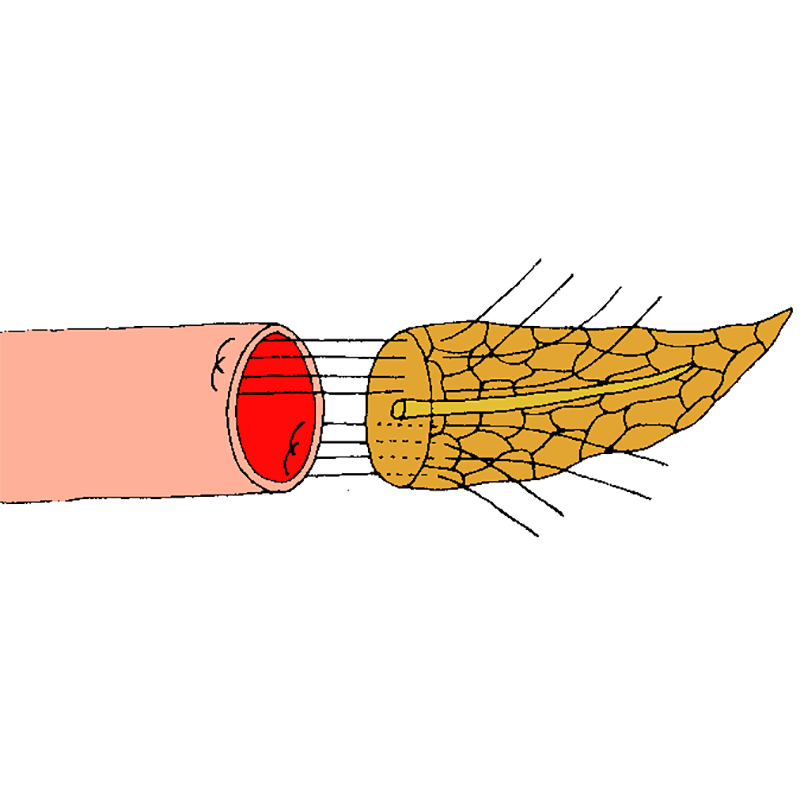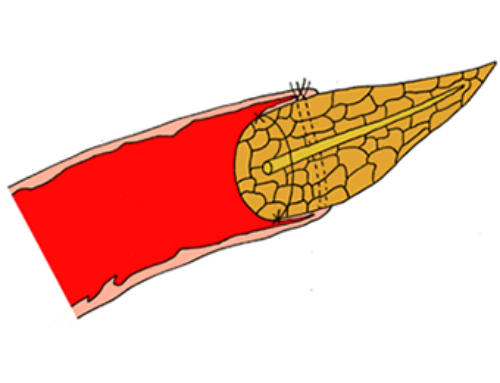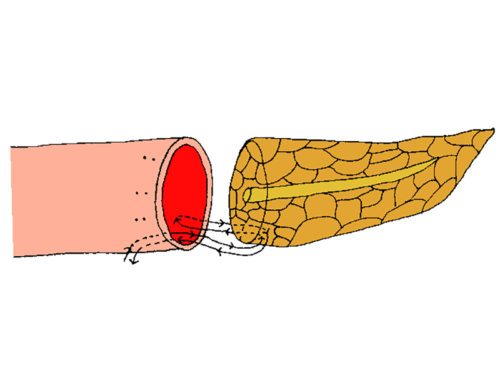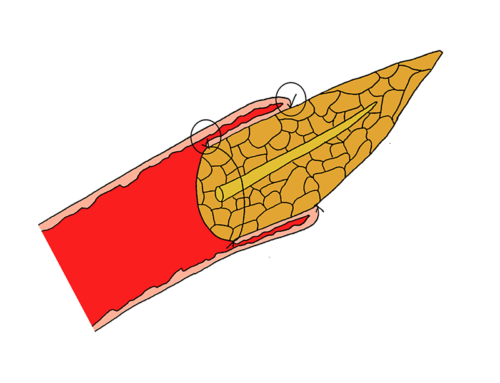The posterior walls of the pancreatic stump and the jejunal cut end are anastomosed by the placement of four completely transpancreatic interlocking mattress-sutures, while the anterior walls are anastomosed by three to four incompletely transpancreatic interlocking mattress-sutures.
Two-layered interlocking mattress suturing end-to-side pancreatojejunostomy
- The posterior walls of the pancreatic stump and the jejunal cut end are anastomosed by the placement of four completely transpancreatic interlocking mattress-sutures, while the anterior walls are anastomosed by three to four incompletely transpancreatic interlocking mattress-sutures.
- Starting with the posterior suture-line, the first suture penetrates the inferior side of the pancreatic parenchyma completely, from anterior to posterior. The suture is then passed through the posterior wall of the jejunum at the most inferior point, from outside to inside the jejunal lumen, and back to outside a few centimetres more superiorly. The needle penetrates the full-thickness of the pancreas from posterior to anterior again at the middle point between the inferior margin of the pancreatic stump and the main pancreatic duct.
- The second mattress suture is placed from the middle point of the two threads from the first mattress suture, following the way of the first mattress suture. This suture goes back to a point 0.2 cm below the inferior edge of the main pancreatic duct and is therewith interlocked with the first mattress suture.
- The third suture is placed from a point 0.2 cm above the main pancreatic duct and goes through the posterior wall of the jejunal loop at the middle point between the two suture holes of the second mattress suture. The needle passes the jejunal wall again a few centimetres superiorly, then penetrating the complete pancreatic parenchyma from posterior to anterior at the middle point between the superior margin of the pancreatic remnant and the main pancreatic duct. The third suture is now interlocked with the second suture.
- The fourth suture goes from the middle point of the two threads of the third suture to the superior margin of the pancreatic stump in a same fashion as the other mattress sutures, and has been interlocked within the third mattress suture. The four sutures are tied.
- For the anterior suture-line, incompletely transpancreatic interlocking mattress sutures are placed in a same manner as with the completely transpancreatic sutures, however, they do not penetrate the full-thickness of the pancreatic stump, but only enter halfway into the pancreatic parenchyma.
- Care needs to be taken to avoid suturing through the main pancreatic duct.
- Anteriorly, additional sutures are placed between the seromucular coat of the jejunal wall and the pancreatic capsule and at the superior and inferior corners of the anastomosis.
- Wang M, Zhu F, Wang X, et al. A modified technique of end-to-end pancreaticojejunostomy with transpancreatic interlocking mattress sutures. J Surg Oncol. 2013;107:783-788.






